#Faninteraction: Social Media and Representation in Popular Television
On April 7th, 2013 NBC’s Hannibal producer Bryan Fuller responded to a tweet from a Hannibal fan or “Fannibal” Rebecca (@RebsPark), to rename one of the many dogs owned by lead character Will Graham, Applesauce.

On April 11, 2014 during season two’s “Yakimono”, psychiatrist Alana Bloom’s adorable new dog Applesauce was introduced into the Hannibal canon.
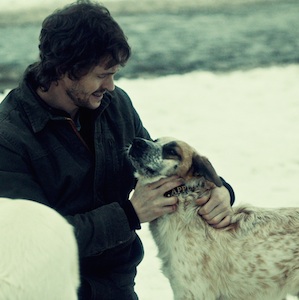
This seemingly small gesture, from fan prompt to canonical implementation, perfectly encapsulates the ever-changing dynamic of creator and fan communication.
Television shows have been a mainstream staple of life for decades, representing a media that focuses on appealing to the widest audience and delivering one-sided entertainment. The central aspect of watching a television show historically has been the inability to interact with what is being presented. When a favourite character died, you were unable to alter their terrible fate, if certain characters entered in a romantic relationship there was no altering that no matter how much you loathed it.
Only in recent years in tandem with the rise of social media has television been re-contextualized to include the possibility of two-way communication between creators and fans.
Fans are increasingly able to access the creative team of their favourite television shows through social media. Likewise, creators, actors, and the creative teams of shows are able to communicate with their fans. Even ten years ago this form of two-way communication would have been seen as unprecedented.
This change in television towards two-way communication has opened up the possibility of external influence in the movement of plot, character development, and relationships that occur during the course of the show. While naming a dog Applesauce hasn’t revolutionized television, it showcases a micro example of the power fans now have to influence show canon. This same power to voice opinions and be heard by show creators has been used to shift the portrayal of minorities in television. Social media has also opened the door for creators to extend minority visibility outside of canon and perhaps most insidiously, utilize social media as an avenue to “fake” representation. Overall though, fan interaction through social media provides an opportunity for fans seeking minority visibility to be heard.
Fan interaction pre-social media
The rise in two-way communication in television might be a relatively new phenomenon, but it is certainly not the herald of fan interaction with television. Fan interaction with television and the resulting fandom has historically been an integral part of the television experience, often with the similar goals of diversification.
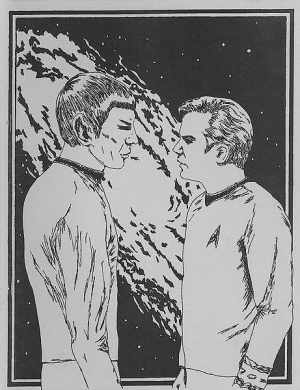
A small but notable example of this are the fanzines that were produced from the 1970s for the classic Star Trek series. Gerry Downes created “Alternative: The Epilog to Orion”, a fanzine focused solely on the homoerotic relationship between Kirk and Spock that was first published in 1976. Although the Kirk and Spock relationship was not in the authorial canon, some fans interpreted the homoerotic undertones and created content to connect how they personally viewed the television show with the reality of the canon. Zines, letterzines dedicated to essays and discussion, and fanfiction at the time were passed in secret through the mail or swapped in person between cups of tea. They existed as spaces that fans could interact with the content they consumed.
These physical examples of fan interaction clearly show that discussion regarding fan interpretation and visibility of minorities have been present since the forming of more fandom-based television.
Fans engaging in the “fandom” of television are a notoriously active audience that interacts with what they watch. In his 1987 book Television Culture, John Fiske discusses a similar highly “active” audience who engage enough to interpret messages and negotiate the content that is being presented to them. Audiences by Fiske’s definition are not the mindless television-watching zombies many public health ads may lead us to believe. Most importantly, Fiske identifies a gap between the ability to interpret messages and the inability of fans, during his time in the 1980s , to control the media in order to produce the content—and by extension representation—they desire.
What has changed since the traceable beginnings of active fan interaction is that social media has forged the bridge between Fiske’s gap. Armed with Twitter, Tumblr, Reddit, and other social media sites, fans who seek to interpret and play with the meanings behind their favourite television shows now have intimate and immediate access to the very people who do have the ability to control and produce the media fans desire: the creators.
From the audiences’ point of view
Choose-your-own-adventure stories are a staple of many childhoods and are a really engaging way to spend a few hours. What made those stories so engaging was that the power to decide both the progression of the story and ultimately the ending was in the hands of the readers.
While television has not reached this level of customization, and would not be served by catering to all viewer’s visions—after all no wants to sit through an hour of fanservice crossovers—television feels far more personal when fans have the opportunity to be heard.
As such, the expectations of fans have grown. Much like a choose-your-0wn-adventure story, viewers want the progress of television to reflect their experiences and desires. By having a say in the progression of a story, viewers expect more than content geared towards the lowest common denominator.
This is perhaps the reason why shows not originally targeted to the mass market are more likely to have an active fan base. BBC’s Sherlock, and Doctor Who are more likely to have an active and vocal fan-base than say sitcom-style shows like Modern Family and The Big Bang Theory due to their innate purpose of appealing outside of the lowest common denominator.
That is not to say sitcom and other “easy watching” shows aimed at the lowest common denominator should not have active viewers tweeting for the inclusion of minorities, but that they are not the target of fan’s expectations nor are they the television shows where the viewers look for representation.
After all, no one looks for a personally catered meal in an airplane—expectations are fairly low. Likewise, not many viewers look for representation in shows meant to be the generally palatable airplane food of television.
A quest to be represented
In the 2014-2015 season, in the major networks AMC, ABC, HBO, and Netflix all had a vast majority of white male directors (67%, 66.5%, 77%, 77% respectively). The lack of diversity in the creators of television shows meant that the people creating television were less likely to include meaningful portrayal of minorities. Instead of simply accepting the lack of diversity in television, social media has allowed fans to bark back.
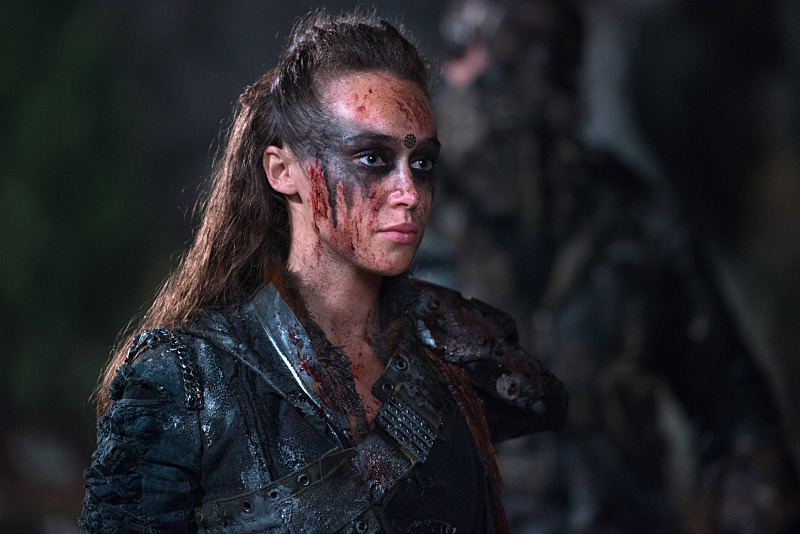
A great example is CW’s The 100, which was recently criticized for killing off their openly gay character, Lexa. Fans revolted, taking to social media to raise awareness through the newly minted campaign “LGBT Fans Deserve Better” that ran on social media to raise awareness of the poor treatment of LGBT characters in television.
The 100 is not an exception either. According to the Washington Post, in 2016 alone, 10 lesbian or bisexual characters were killed, on shows such as CW’s Jane the Virgin, AMC’s The Walking Dead, Syfy’s The Magicians, and CW’s The Vampire Diaries.
Even Hollywood is not immune to these social media representation campaigns with both #Give Captain America A Boyfriend and #Give Elsa A Girlfriend having trended on Twitter and other social media sites in recent months.
Sexuality is not the only minority that fans have sought the proper representation of either, though it is one of the loudest. Viewers have also begun to voice their anger with television’s treatment of disability, gender, and race.
And show runners and actors are listening. With social media this anger can be heard. After the death of NBC Hannibal‘s Jewish, Asian-American detective Beverly Katz, the actress Hettienne Park responded to fan’s outcry in her blog post entitled “Racism, Sexism, and Hannibal: Eat The Rude“:
“That episode got a lot of positive reviews, but it also incited an on-line storm of vitriol directed to Fuller himself for killing off Katz, or more specifically, for being racist and sexist. I caught wind of this myself via Twitter from our beloved Fannibals [fans].”

Park goes on to say “Fuller cast me in a role that I didn’t think I had a chance in hell of getting. I rarely if ever see minorities, women, minority women, let alone Asian women, get to play characters like Beverly Katz.”
Park’s entire commentary on the industry reflects a lot of the anger of many television viewers, especially minorities who fight to see themselves represented in television. There is a minority market and media currently does a poor job of representing them. In terms of race, a recent UCLA study showed that there are seven non-white people in America for every non-white character who is portrayed in television. It is a ratio that proves television severely under-represents the reality.
The difference is that historically televised visibility for minorities was more of a fantasy to be passed around in zines and quietly hoped for, but never expected. With social media and fan/creator/performer interaction representation is an achievable goal and a goal that can be directly addressed instead of being spoken of in secret.
From the creator’s point of view
In addition to fans having instant access to the people responsible for crafting a television show, social media has offered creators a venue to talk back. While this interaction would have previously been limited to news releases or conventions, on social media updates to canon happen quickly in response to fan questions.
In terms of this working in favour of representation, after the finale of Legend of Korra was aired, creators Michael Dante DiMartino and Bryan Konietzko both took to their respective blogs to confirm that the queer relationship at the conclusion of the show between female characters Korra and Asami was indeed canon. Social media provided an avenue to disclose something that could not have been explicitly said in the show as it aired in countries where same sex relationships, especially depicted in a children’s show, were not legal.
This form of creator interaction has now become somewhat commonplace. Entire blogs and social media accounts have been created for shows like Teen Wolf, Supernatural, and Orphan Black with the purpose of responding to fan questions and drumming up interest.
The darkside of communicating
Hannibal and Legend of Korra demonstrate a far more optimistic view of creator and actor/actress fan interaction. Occasionally opening the communication pathways between creator and audience can be detrimental and is worth visiting briefly. Hearing the wants and desires of fans means that creators have knowledge of what drives fans to consume and this knowledge can contribute to pandering in favour of substance. Though arguably even worse occurs when fans are vocal about minority portrayal or exclusion on social media. This can lead to creators crafting “fake representation” to lure in progressive fans.
Creating fake representation is most prevalent with sexuality as race and gender are far more apparent visually while sexuality can be made more ambiguous. Fake representation geared towards queer characters is often considered “queer baiting.”
Queer baiting is when creators imply popular queer relationships for the sake of show engagement but never follow through. In Supernatural, Sherlock, and Teen Wolf’ constant references to queerness between leading male characters in addition to either creators hinting or denying these relationships on social media has led to fans accusing the shows of queer baiting.
In the case of Teen Wolf, social media and fan interaction has had a large hand to play in this.
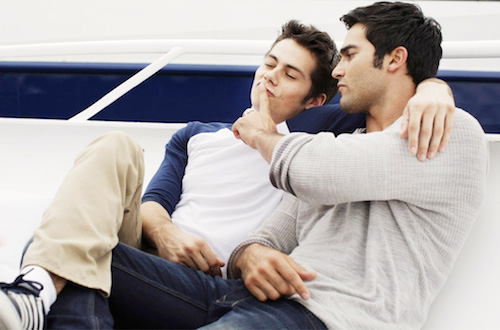
In summer 2012 a video of actors Dylan O’Brien and Tyler Lee Hoechlin from Teen Wolf surfaced with both actors seemingly cuddling on a boat. The video was released for the upcoming Teen Choice Awards, referring to them being on a “ship”, referencing their character Stiles and Derek’s fan-supported relationship. MTV even named Stiles and Derek as a nominees for the “Ship of the Year” contest through social media. Some viewers saw this as authorial confirmation of the relationship but both Stiles and Derek in the show later gained female love interests. In the Teen Wolf fandom creators acknowledged vocal fan desires through social media and gave them a legitimate place in their fan/creator interactions but ultimately did not follow through.
Pandering and blatant baiting does not truly advance the inclusion of minorities, but it does at the very least begin to create the dialogue of representation. Even the example of pandering and baiting in Teen Wolf shows that there is a cognizant understanding that minorities, in this case queer people, do exist and at the very least should be considered when making television. It’s not the best or brightest step but hopefully it is a precursor to perhaps far more aware inclusion.
Wash my back and I’ll wash yours?
In the end, communication is, at its core, all about reciprocity. It takes two to tango, but in recent years it now takes two to create television.
To quote Costello and Moore, “The powerless become powerful when they mimic and extend the craft traditionally reserved for producers of the original text.” With the introduction of social media, never before have fans had more power to craft their media to suit their needs for inclusion. Campaigns like “LGBT Fans Deserve Better” are an example of the progressive ways that fans are pushing for proper minority visibility through social media.
Likewise in the truest sense of reciprocity, never before have creators been able to profit from representation than through fan engagement.
But while creators and companies may profit through this knowledge of fan interaction, it still shows a progressive shift in how television is being created and consumed. The needs of more marginalized groups can finally be heard and represented, even if it will take us as a society some time to shift away from a more profit and advertising-driven representation towards a genuine desire to showcase a variety of people in television. The conversations happening on social media right now about minority portrayal show that we as a media-consuming society finally have a voice, it just might take a little longer for it to be integrated in a natural way.
It’s a sticky sort of relationship of give and take, but it is a relationship that nonetheless is not going to disappear in the near future. As Hannibal creator Bryan Fuller himself said, “with the advent of social media, fans have a face and a voice in a way they have never had previously.”
Works Cited
“Alternative: The Epilog to Orion.” Fanlore. Mediawiki, 7 July 2016. Web. 27 July 2016.
Baker-Whitelaw, Gavia. “How ‘Teen Wolf’ Lost Its Own Fandom.” The Daily Dot. N.p., 2013. Web. 27 July 2016.
Butler, Bethonie. “TV Keeps Killing off Lesbian Characters. The Fans of One Show Have Revolted.” Washington Post. The Washington Post, 4 Apr. 2016. Web. 27 July 2016.
Costello, V., and B. Moore. “Cultural Outlaws: An Examination of Audience Activity and Online Television Fandom.” Television & New Media 8.2 (2007): 124-43. Web.
Fiske, John. Television Culture. London: Methuen, n.d. Print.
Lady Geek Girl. “Is Supernatural: Sexist?” Lady Geek Girl and Friends. WordPress, 23 Nov. 2012. Web. 27 July 2016.
Lorre, Rose M. “Bryan Fuller on Hannibal, Fannibals, and Finally Having a Show Last More Than 2 Seasons.” Vulture. N.p., 16 Sept. 2014. Web. 27 July 2016.
Rothman, Lily. “The Hidden Factor in Hollywood’s Racial Diversity Problem.” Time. Time, 13 Feb. 2014. Web. 04 Aug. 2016.
Ryan, Maureen. “Peak Inequality: Investigating the Lack of Diversity Among TV Directors.” Variety. Variety Media, 10 Nov. 2015. Web. 27 July 2016.
What do you think? Leave a comment.







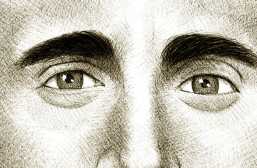


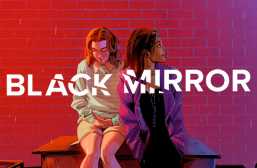
It’ll be interesting to see how this tail wags this dog. There’ll be a cave-in – like whining parents causing grade inflation in schools – but where it’ll stop nobody knows. Be careful of what you want, you might get it. Reminds me of Dudley Randall’s “A Poet is not a Jukebox.”
As my wife says, it’s all mind chewing-gum. It’s better than internet gaming so if you have to immerse yourself in anything then TV shows are probably the best choice.
I’m not usually creative enough to write clever tweets, so I probably won’t be influencing TV plots very much.
i have noticed that fandom seems to make a big drama on small petty things like everytime when its not even shown on an episode or even an episode shown yet.
Good article, but luckily, not every show is being produced with Twitter in mind, and many creators are actively working to avoid being influenced by fan chatter.
Oh 100%. I think this form of interaction and power over media suffers from having to walk a fine line. On one end it is great for holding creators accountable but on the other end fans can be terrifying and what they desire is not always smart for a story.
Social media is great for making diversity representation more transparent but that does not always mean it is great for storytelling. There are instances of creators caving to fan’s wishes and letting fanservice dictate aspects of the story… and that just muddles an otherwise great show.
The increased fan engagement helps the quality of programming.
One thing I can say about fandoms is many times they reflect the actors they love.
Great article, illustrates how important social media is for TV these days. I believe that it will become even more evident in the future.
Social networks are great for sharing information about the entertainment industry. Facebook and Twitter are based on who you are interested in so if someone ‘likes’ or ‘dislikes’ something it is bound to peak your interest and way your decision one way or the other just a little bit.
It is also a way to share your opinions with the world. There are 3 ways i usually base my decision on what Im going to watch. First and foremost is my personal opinion. If i see something I think looks interesting thats all that matters. Second is the critics. I love Rotten Tomatoes and always why I look forward to the Oscars and Emmys. And lastly, friends/family and people I respect and I think thats where social media comes into play.
I personally cant ask every single person individually what they thought on something, but if they make an effort to post an opinion on something through social media they felt strongly enough about it one way or another that Im bound to listen at least a little bit
Best thing I ever did was to throw out my television and have never regretted it. There is so much more to do in life than watching television and a good book beat it hands down every time.
The trouble is we’ve become obsessed with the shows and their personalities that we forget that they are only stories and not real life.
It used to be jiggle-TV with laugh tracks to cliches like “I don’t do windows,” and was rightly called “idiot box.” That’s why I had no TV for 25 years – but brought back by Breaking Bad. That puppy’s like a great novel.
Nowadays, a show’s survival is directly connected to its Twitter presence.
The rise of social media has fundamentally altered the way viewers interact with shows.
Social Media has had an enormous impact on Scandal.
I LOVE to live tweet with the Scandal fans.
Fans should shut up and let the writers do their job. I’m a huge tv fan and have seen storylines that I don’t agree with time and time again. But that’s life. Things don’t always go according to plan or have a “perfect ending’. And TV tries to imitate life as much as it can. At the end of the day… it’s just tv.
Thanks For sharing such knowledge full post!
I feel like we miss out a bit in the UK when it comes to sharing instantaneous reactions to TV. By the time we watch most shows they have already aired in the US, so we are not as clued in to the ‘tweeting while you watch’ phenomenon.
True, but for U.S. fans of British TV, it often works in reverse. Sherlock is a good example. Not only did those in the states have to wait 2 years or more for a new series, but then watch it on PBS, which used to edit it for content! I finally resorted to just buying the DVD’s. This was true for many shows I love, such as Wallander and Doc Martin. Now we have BBC America and can watch many shows when they air in the UK–at last!
Really Interesting post.
Its a serious lack of respect i see in fandoms, and twitter and tumblrs and hash lannguage amongst ppl esp tweeting the creators and saying i dont like this or that, i am not watching blah blah and most refuse to even see the whole NARRATIVE esp when you have show is so narrative based.
Its a shame and disrespectful and am afraid i dont think it will change much.
I think feedback is ok but not hate feedback and also i think ppl know what is working and not working and which is a popular couple and why it works… story counts for alot (which i think some might look over when it comes to shipping afraid to say it)
Hmm. The outcry for pairings like Stiles and Derek come largely from cis female fans than from LGBTQ viewership. Not that it isn’t a valid need, just not exactly what you’re talking about here.
Valid point! Though for the Stiles and Derek specific example it is more to demonstrate the “baiting” that goes on by creators because they know (a lot in part thanks to social media including Tumblr/Twitter) people want it. They then use social media to prop up these “couples” and make them seem valid and represented only to deny them.
I totally agree that a large sect of these populations are cis females but validating queer experiences and then denying them does affect the LGBTQ sect of the fandoms, who do very much exist. Also in general its just in pretty bad taste. Would love to hear your thoughts.
Thank you for a great article regarding the hazard of technology.
An interesting point that needs to be considered (perhaps for an entirely different article) is HOW creators and fans should interact. The stereotypical crazy fangirl shoving slash into the actors’ faces comes in part from the lack of experience and direction in these matters. Now that we have more and more interaction happening in a real-time setting, perhaps as a community, we can navigate how to approach each other without making the situation awkward or even offensive.
Thanks for writing about the good and the bad about these interaction. Though I personally don’t take part on social media, I think it’s great that fans have the opportunity to at least believe that they have an input (I say it that way because I doubt there are many show creators like Fuller that will look at individual tweets). It’s just another way that TV and movies are becoming more of an interactive experience, and I’m curious to see where it’ll go in the future.
I really liked the article. I honestly think that social media as a venue for interaction between creators and fans is terrific, but as in any other thing, moderation is the key. Too much offense or too little defense from either side is always bound to result in complications.
I think this is a fascinating article. As a queer woman, I have been very involved in following representation issues in media, and I have often been very upset by the lack thereof. I think that this article does a very good job of showing both sides of the issue.
If I may add, though this is outside the realm of television, J.K. Rowling directly referenced fan works following her reveal that Dumbledore was gay after fans questioned Dumbledore and Grindelwald’s relationship. I feel this supports your thesis as well. As far as T.V. goes, Steven Universe and Adventure Time also come to mind as examples of added diversity following fan support (though this might have been influenced by Rebecca Sugar, a queer creative source on both shows).
Great article. Fans used to write to the producers and beg them for not stoping their favorite show. But, now, we can see that how social media change everything. Like the the show How I Met Your Mother, fans were mad at the ending and they throw tons of comments to its producers. Ultimately, they made another ending to fans.
This is an excellent piece! Well researched too! It’s interesting to see Youtube Red bridging the gap into “television” and the level of interaction that will bring to the table because of an already increasingly active communication channel.
Great article! It is interesting to consider how communication between fans and producers/creators has evolved over time. What was once a limited one-to-many format is now a many-to-many format with social media. Unlimited fans are able to talk to one another and talk to the producers, corporations, show writers, and actors involved with their favorite shows. I think that this is a great way to move media forward when it comes to all forms of representation.